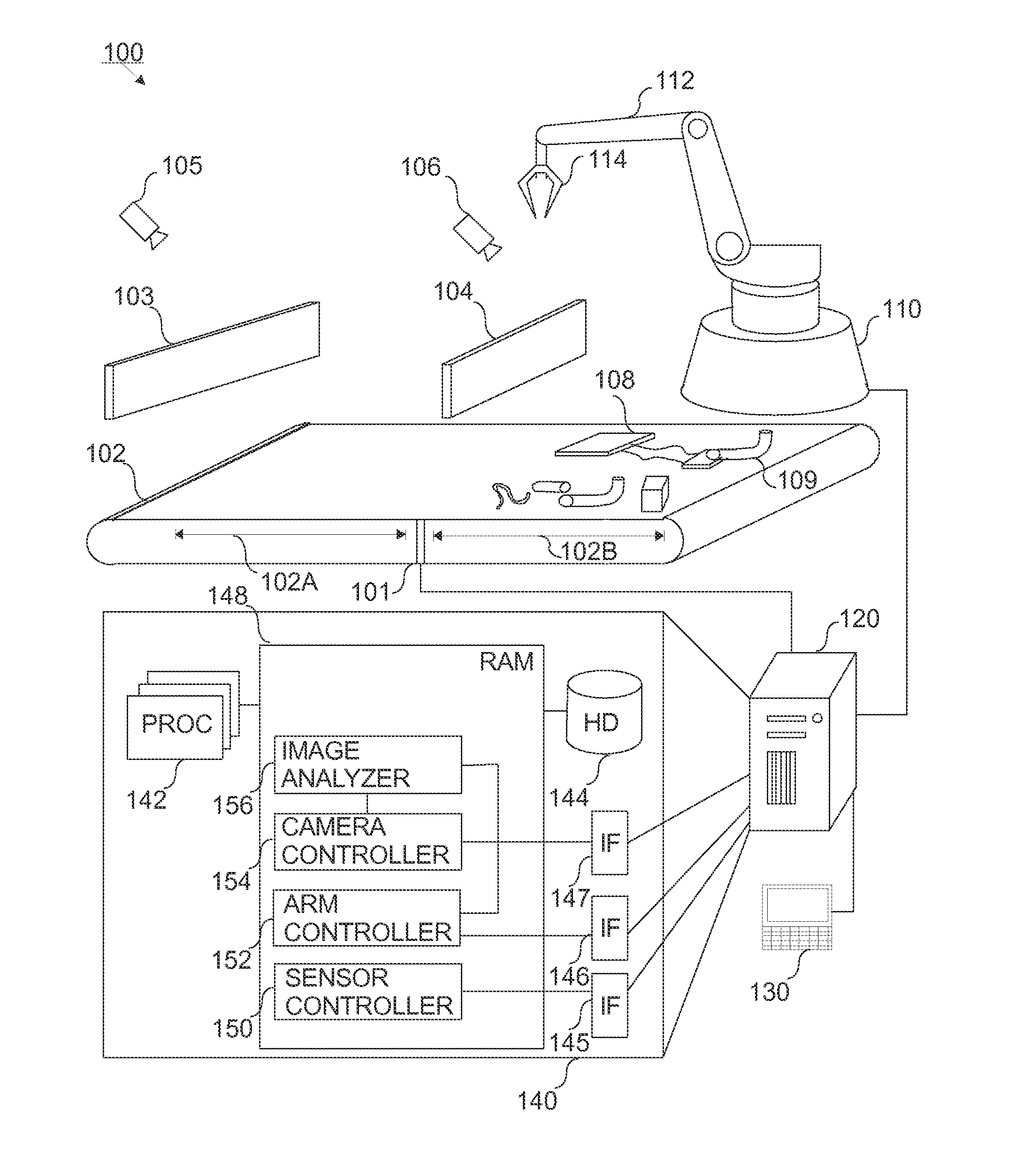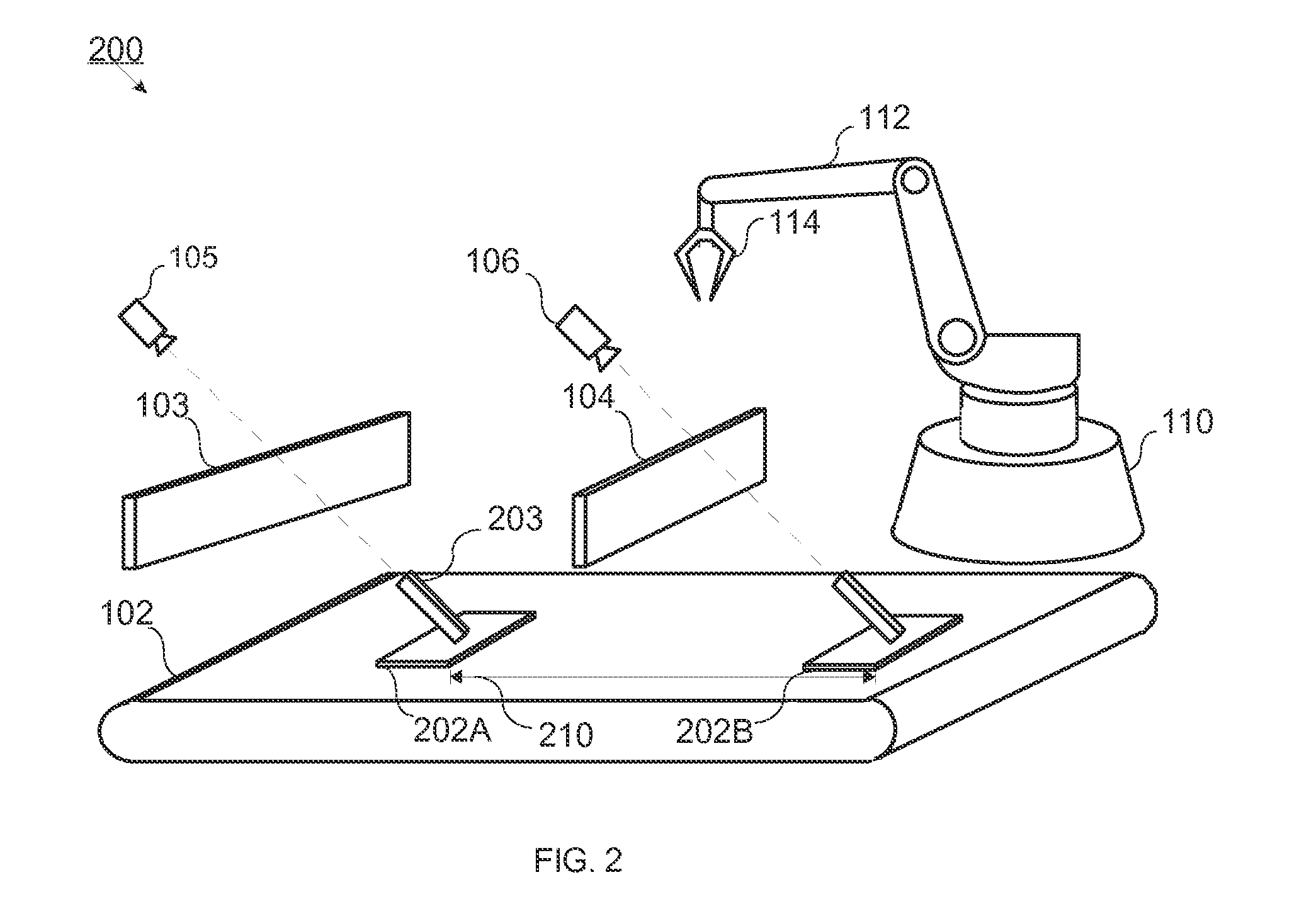Method for invalidating sensor measurements after a picking action in a robot system
a robot system and sensor technology, applied in simulator control, computer control, instruments, etc., can solve the problems of consuming energy and time, acquiring a second reading with such sensors, and at least partly invalidating the matrix, so as to save energy and processing time of the robot system, and improve the quality of the selection of objects.
- Summary
- Abstract
- Description
- Claims
- Application Information
AI Technical Summary
Benefits of technology
Problems solved by technology
Method used
Image
Examples
Embodiment Construction
[0061]Reference will now be made in detail to the embodiments of the present invention, examples of which are illustrated in the accompanying drawings.
[0062]FIG. 1 is a block diagram illustrating a robot system applying two line sensor arrays in one embodiment of the invention.
[0063]In FIG. 1 robot system 100 comprises is a robot 110, for example, an industrial robot comprising a robot arm 112. To robot arm 116 is connected a gripper 114, which may also be a clamp or a claw. Robot arm 116 is capable of moving gripper 112 within an operating area 102B of a conveyer belt 102. Robot arm 112 may comprise a number of motors, for example, servo motors that enable the robot arms rotation, elevation and gripping to be controlled. Various movements of robot arm 112 and gripper 114 are effected by actuators. By way of example, the actuators can be electric, pneumatic or hydraulic, or any combination of these. The actuators may move or rotate various elements of robot 110. In association with ...
PUM
 Login to View More
Login to View More Abstract
Description
Claims
Application Information
 Login to View More
Login to View More - R&D
- Intellectual Property
- Life Sciences
- Materials
- Tech Scout
- Unparalleled Data Quality
- Higher Quality Content
- 60% Fewer Hallucinations
Browse by: Latest US Patents, China's latest patents, Technical Efficacy Thesaurus, Application Domain, Technology Topic, Popular Technical Reports.
© 2025 PatSnap. All rights reserved.Legal|Privacy policy|Modern Slavery Act Transparency Statement|Sitemap|About US| Contact US: help@patsnap.com



